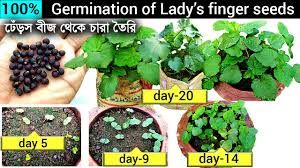
Bismillaher Rahmanir Rahim.
Assalamu Alaikum Wa Rahmatullahi Wa Barakatuhu
Dear Companions Today I want to share with you some words about the evils of killing foetuses.Welcom to this post and congratulations to all
Bhendi (Okra) Cultivation
Bhendi, also known as Okra (scientific name: Abelmoschus esculentus), is a popular vegetable crop grown in tropical and subtropical regions around the world. In India, it is commonly referred to as "vendi" or "bhindi," and is valued for its nutritional properties and culinary uses. This article will explore the bhendi cultivation method in detail, discuss Bandel nutrients in the context of soil health and plant growth, and highlight the nutritional value of okra itself.
Agro-climatic Conditions for Bhendi Cultivation
Bhendi is a warm-season crop, thriving best in temperatures between 25°C to 35°C. It is highly sensitive to frost and requires a long, frost-free growing period. It grows well in areas with annual rainfall between 600 to 1,200 mm, but proper drainage is crucial as the plant is susceptible to waterlogging. Optimal sunlight is necessary for proper growth, and light to moderate wind conditions are ideal, as strong winds can damage plants.
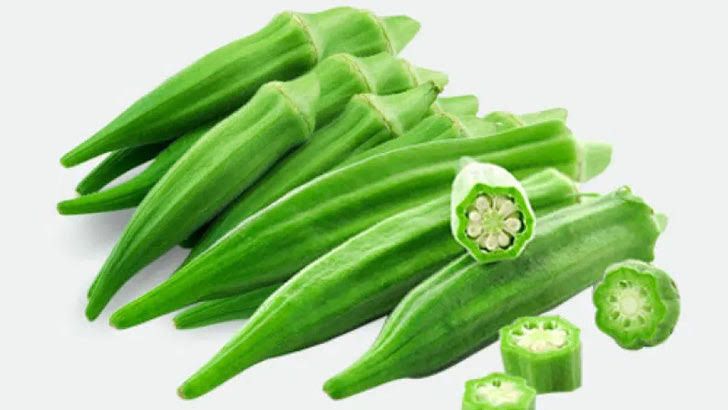
source
Soil Requirements for Bhendi
Bhendi thrives in a wide variety of soils, but well-drained, loamy, and sandy loam soils rich in organic matter are preferred. The ideal pH range is 6.0 to 6.8, although bhendi can tolerate slightly alkaline conditions. The soil should be deep enough to accommodate the root system, and care should be taken to avoid soil compaction, which can hinder root penetration.
Bandel Nutrients for Bhendi Cultivation
Bandel nutrients refer to a balanced fertilization approach, where both macronutrients and micronutrients are applied according to the crop’s specific needs. Bhendi is a nutrient-demanding crop, and soil fertility plays a crucial role in determining yield and fruit quality. The application of Bandel nutrients ensures optimal plant growth and productivity.
The key nutrients required for bhendi are:
Nitrogen (N): Essential for vegetative growth. Nitrogen deficiency results in stunted growth and pale yellow leaves.
Phosphorus (P): Vital for root development and early plant vigor. Phosphorus deficiency causes purpling of leaves and poor root growth.
Potassium (K): Important for flowering, fruiting, and overall plant health. Deficiency leads to reduced fruit set and poor fruit quality.
Micronutrients: Elements like zinc, boron, and iron are crucial for proper enzymatic functions and overall plant health. Deficiency in micronutrients can lead to growth abnormalities and reduced yields.
In the context of Bandel nutrients, it's essential to test the soil before planting and apply fertilizers based on soil test recommendations. The right balance of nutrients enhances the quality and yield of bhendi fruits.
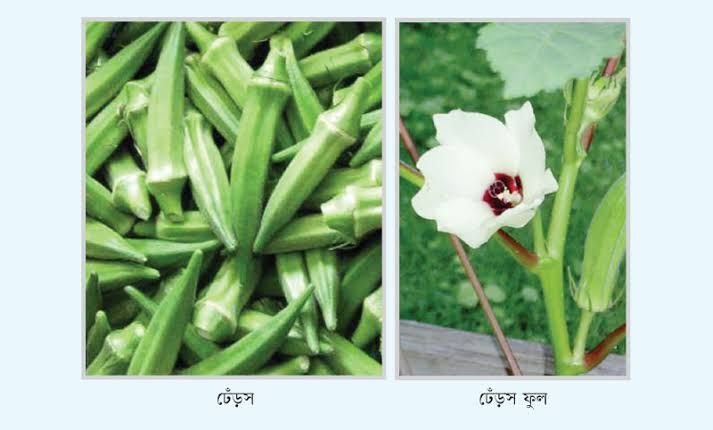
source
Land Preparation for Bhendi Cultivation
Land preparation is a critical step in ensuring successful bhendi cultivation. The following steps are recommended:
Plowing and Harrowing: The field should be plowed deeply to a depth of 20-30 cm to loosen the soil and remove weeds. Two to three rounds of harrowing will help break clods and achieve a fine tilth.
Leveling: The land should be leveled to ensure proper irrigation and drainage. Uneven land may result in waterlogging, which can be detrimental to bhendi plants.
Bed Formation: Raised beds or ridges are often prepared for bhendi cultivation to improve drainage and prevent waterlogging. The beds should be spaced about 60-75 cm apart, with a bed width of around 1 meter.
Sowing and Seed Rate
Bhendi can be grown through direct sowing or transplanting. Direct sowing is the most common method, as bhendi seeds germinate easily. The following practices are recommended for sowing:
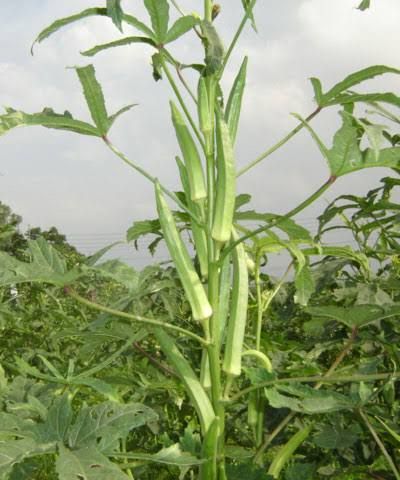
source
Seed Treatment: To protect seeds from fungal diseases, they can be treated with fungicides like Carbendazim or Thiram at the rate of 2-3 g/kg of seed. For enhanced germination, seeds can be soaked in water overnight before planting.
Seed Rate: The recommended seed rate for bhendi cultivation is 8-10 kg per hectare, depending on the variety and spacing.
Sowing Method: Seeds are usually sown on ridges or in furrows at a depth of 2-3 cm. The spacing between plants should be around 30-45 cm, while the row spacing should be 60-75 cm.
Irrigation Management
Bhendi requires regular watering, especially during critical growth stages like flowering and fruit development. Irrigation should be applied at 7-10 day intervals during the vegetative stage and more frequently during dry spells. Drip irrigation is an efficient method as it ensures proper moisture distribution while conserving water.
Over-irrigation should be avoided as it can lead to root rot and other fungal diseases. Similarly, under-irrigation can result in poor fruit quality and reduced yield. Proper irrigation management is essential to achieve a healthy crop.
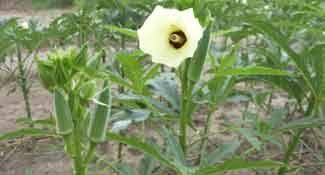
source
Weed and Pest Management
Weed control is critical during the early stages of bhendi growth. Weeds compete with bhendi for nutrients, water, and sunlight, reducing crop vigor. Manual weeding or mechanical cultivation can be employed to control weeds. Mulching with organic materials like straw or plastic can also help suppress weed growth and conserve soil moisture.
Common pests that affect bhendi include:
Fruit and Shoot Borer: Causes damage to the fruit by boring into it. Control measures include the application of insecticides like Spinosad or Neem-based biopesticides.
Aphids and Whiteflies: These sucking pests can spread viral diseases and weaken the plant. They can be controlled by spraying neem oil or insecticidal soap.
Red Spider Mites: These tiny pests suck plant sap, causing leaves to curl and dry out. Acaricides or neem oil sprays can help control mite infestations.
Disease Management
The major diseases affecting bhendi are:
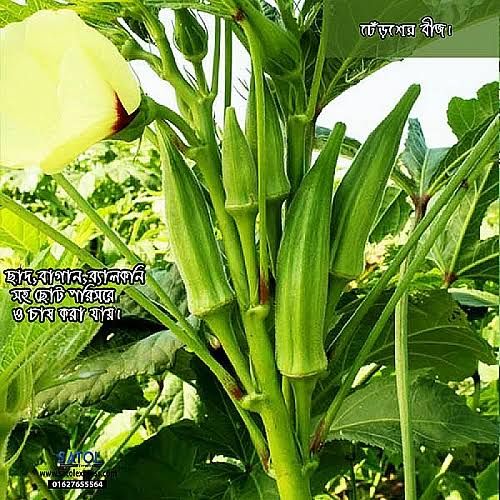
source
Powdery Mildew: Characterized by a white powdery coating on leaves and stems, this fungal disease can be controlled with sulfur-based fungicides.
Yellow Vein Mosaic Virus (YVMV): A viral disease spread by whiteflies, YVMV causes yellowing of veins and reduces fruit yield. Controlling whiteflies through regular monitoring and insecticide application can help prevent YVMV.
Harvesting and Post-Harvest Management
Bhendi is typically harvested 45-60 days after sowing, depending on the variety. The pods should be harvested when they are tender, usually 8-10 cm in length. Harvesting should be done every 2-3 days to ensure continuous fruit production.
After harvesting, the pods should be cleaned and sorted according to size and quality. Bhendi is a perishable crop and should be stored in cool, humid conditions to extend shelf life. Proper packaging and transportation are essential to avoid physical damage during handling.
Nutritional Value of Bhendi
Bhendi is a highly nutritious vegetable, rich in vitamins, minerals, and fiber. Its nutritional composition per 100g includes:
Energy: 33 kcal
Carbohydrates: 7.5 g
Dietary Fiber: 3.2 g
Protein: 2 g
Fat: 0.2 g
Vitamin C: 21 mg (35% of daily recommended intake)
Vitamin A: 375 IU
Folate: 60 mcg
Calcium: 81 mg
Magnesium: 57 mg
Bhendi is particularly valued for its high fiber content, which aids digestion and prevents constipation. Its low-calorie content makes it an ideal vegetable for weight management, while its rich vitamin C and antioxidant content boost the immune system.
source
Bhendi cultivation, when done with proper land preparation, irrigation, nutrient management, and pest control, can yield high-quality produce. The application of Bandel nutrients ensures that the crop receives the right balance of macro and micronutrients for optimal growth. Furthermore, bhendi’s high nutritional value makes it a valuable addition to any diet, providing essential vitamins, minerals, and dietary fiber.
Upvoted. Thank You for sending some of your rewards to @null. Get more BLURT:
@ mariuszkarowski/how-to-get-automatic-upvote-from-my-accounts@ blurtbooster/blurt-booster-introduction-rules-and-guidelines-1699999662965@ nalexadre/blurt-nexus-creating-an-affiliate-account-1700008765859@ kryptodenno - win BLURT POWER delegationNote: This bot will not vote on AI-generated content
Telegram and Whatsapp